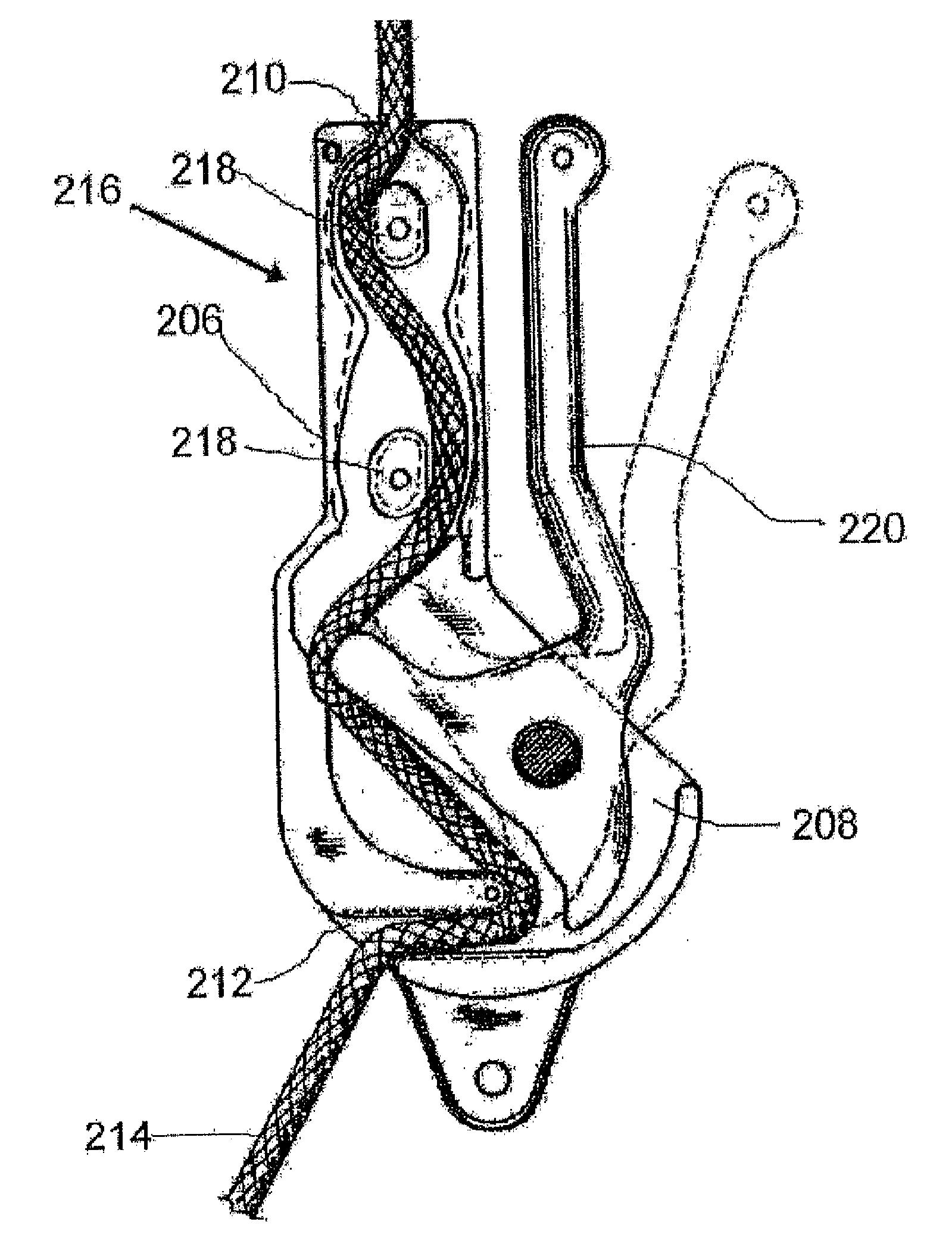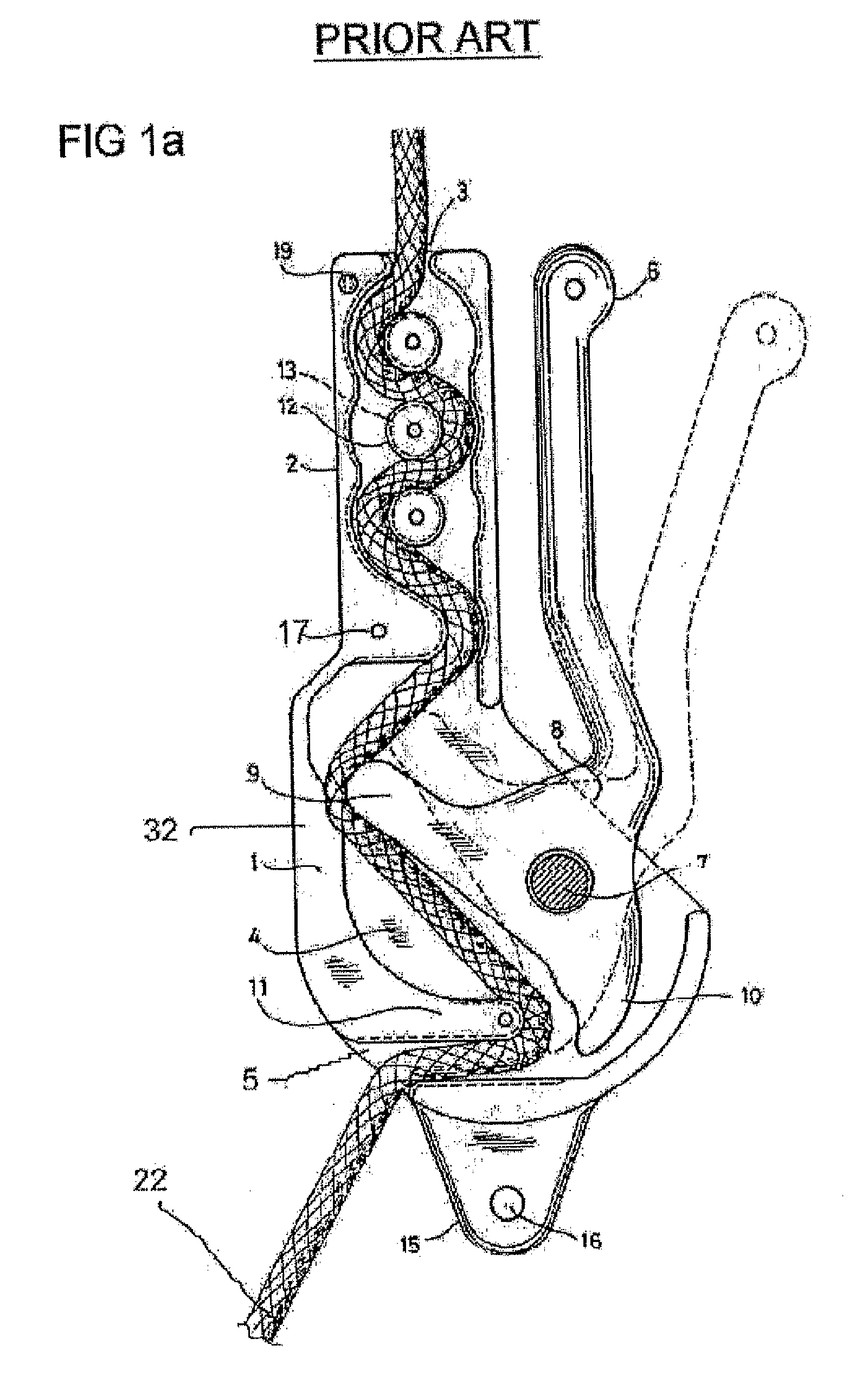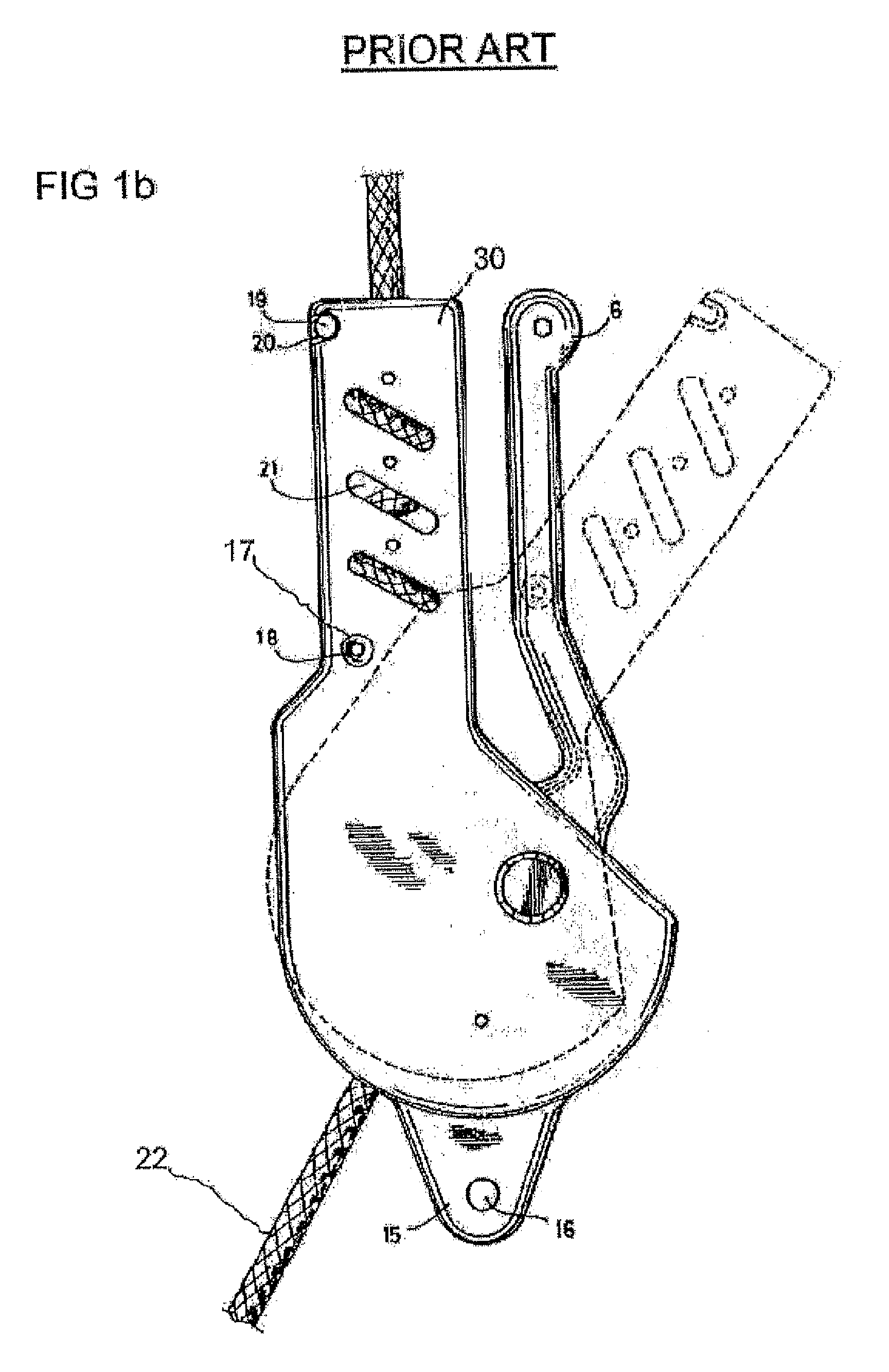Advanced "Omer" rescue system
a rescue system and advanced technology, applied in the field of advanced " omer " rescue systems, can solve the problems of insufficient address of devices, inability to meet the needs of many escapees, and inability to adapt or comfort many escapees
- Summary
- Abstract
- Description
- Claims
- Application Information
AI Technical Summary
Benefits of technology
Problems solved by technology
Method used
Image
Examples
Embodiment Construction
[0063] The present invention is a rescue system construction and method of operation thereof.
[0064] The principles and operation of a rescue system according to the present invention may be better understood with reference to the drawings and the accompanying description.
[0065] Reference is now made to FIGS. 6a, which is an escape system 100 that is constructed and operable in accordance with a preferred embodiment of the present invention. Escape system 100 includes a control device 102 and an anchoring device 104. Control device 102 is configured for controlling the movement of a person (not shown) on a cord 106. The term “cord” is defined herein to include a line made of twisted fibers or threads, rope, cable, chain or any other equivalent elongated means for lowering and raising loads. Cord 106 is typically a cord having international standards certification, made from nylon or Kevlar or a cord having a steel core with a textile coating. Anchoring device 104 is configured for ...
PUM
 Login to View More
Login to View More Abstract
Description
Claims
Application Information
 Login to View More
Login to View More - R&D
- Intellectual Property
- Life Sciences
- Materials
- Tech Scout
- Unparalleled Data Quality
- Higher Quality Content
- 60% Fewer Hallucinations
Browse by: Latest US Patents, China's latest patents, Technical Efficacy Thesaurus, Application Domain, Technology Topic, Popular Technical Reports.
© 2025 PatSnap. All rights reserved.Legal|Privacy policy|Modern Slavery Act Transparency Statement|Sitemap|About US| Contact US: help@patsnap.com



